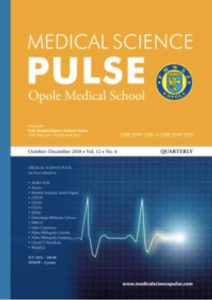Publications

Assessment of selected muscles reactivity in the lower spinal segment
Authors: Kacper Chojowski 1, Kamila Strzelczyk 1, Michal Kuszewski 2
Affiliations:
- Students Scientific Association FASCYnaci, J. Kukuczka’s Awf Katowice, Poland
- Institute of Physiotherapy, J. Kukuczka’s Awf Katowice, Poland
Journal: Medical Science Pulse - March 2022, Volume 16, Issue 1, Pages 51-56 (DOI: 10.5604/01.3001.0015.8246)
-
Field & Applications:
- Medical
- Musculoskeletal disorder
Background: Lumbar spine pain is now a common affliction. In 90% of cases, the pain is of ambiguous and multicausal etiology, described as non-specific lower back pain (NLBP). Various models of this dysfunction were examined. The most popular model presents the pain as a result of an insult and secondary to changes in tension and lumbar muscles degeneration. There is no unequivocal solution concerning the cause of lumbar spine pain in the literature.
Aim of the study: To examine the differences in muscles reactivity in the lumbar region in cases who suffer from lumbar spine pain in comparison to otherwise healthy controls.
Material and methods: In total, 50 participants (24 men and 26 women) aged 18–45, including 24 people with pain, and 26 without ailments were included in the study. The visual analogue scale was used to measure pain intensity. The participants were assessed to determine the reactivity of the soft tissues of the lumbar part of the body. Selected muscles of this area were examined using a myotonometer, which shows five parameters relevant to viscoelastic tissues.
Results: There were significant differences in the level of the pain (p<0.001), hypokinesia of the left abdominal rectus (p<0.05), asymmetry indicators for the creep parameter of the erector spinalis and abdominal external oblique muscle, and the stiffness of abdominal rectus (p<0.05). No significant differences for the remaining parameters were found.
Conclusions: Tissue reactivity of selected muscles of the lumbar spine shows slight differences because of pain afflictions occurring in this area.
Keywords: lower back pain, muscles, tissue reactivity, soft tisuse
In conclusion, we found that the occurrence of certain differences in muscle reactivity depends on the presence or absence of NLBP.


